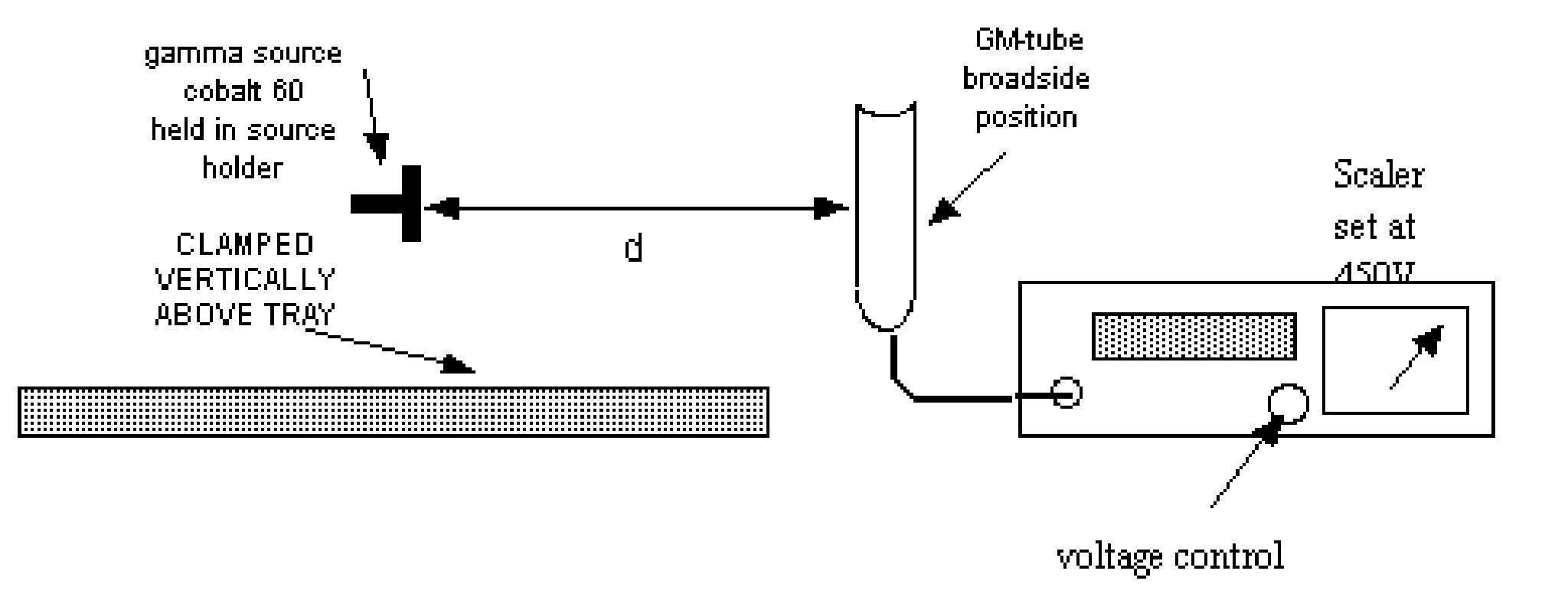Apparatus:
GM-tube, LED counter, stop-watch, metre ruler, set square, gamma source (cobalt 60), source holder, spill tray, local rules sheet.
Procedure:
1. Read the sheet “Local rules for the use of sources of ionising radiations by students”
2. Connect the GM-tube to the counter and switch on the counter.
Note: Your counter may look different from the one shown in the diagram.
(See your teacher if you need help.)
Set the working voltage to 450 volts and allow the apparatus to warm up for a minute.
3. Without the radioactive source present find the background count rate, B (counts per second) over a period of 100 seconds.

![]()
4. Set up the apparatus as in the diagram (with![]() ). This distance is measured from a convenient point on the gamma source holder to a convenient point on the GM-tube (eg. nearest edge facing the source).
). This distance is measured from a convenient point on the gamma source holder to a convenient point on the GM-tube (eg. nearest edge facing the source).
5. Find the uncorrected count rate (counts per second) by measuring the counts recorded over a 100 second period.
6. Calculate the corrected count rate![]() (in
(in![]() ) by subtracting your background count rate.
) by subtracting your background count rate.
7. Repeat stages 4 & 5 this time for![]()
8. Repeat stages 4 & 5 for further values of d between 2 & 12 cm.
Tabulate your results including a calculated column labelled![]() in
in![]()
While you are waiting you should now be able to start drawing the graph.
9. Draw a graph of corrected count rate![]() against
against![]()
10. From your graph decide whether or not your data verifies the inverse square law for gamma radiation which states that the corrected count rate is inversely proportional to the square of the distance.
11. How would the radiation intensity (corrected count rate) vary with distance for a parallel beam of gamma radiation?
